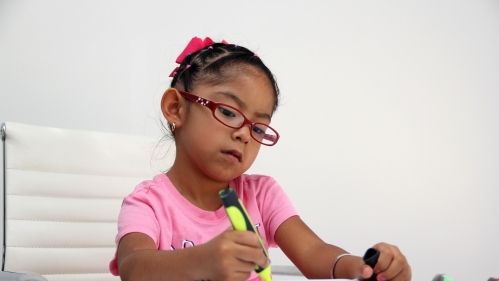A new study by the Centers for Disease Control of children with profound autism, the most severe form of the condition, found that cases are increasing, and those most likely to be diagnosed are poor, female and non-white.
Walter Zahorodny, director of the New Jersey Autism Study at the Rutgers New Jersey Medical School, who helped compile the data and compute the results, discusses the more than 16 years of patient data and the importance of findings showing that a quarter of children with autism are diagnosed with profound autism.
What is autism?
It’s a neurodevelopmental disorder that primarily affects an individual's ability to communicate and connect socially. Unfortunately, we don’t understand it biologically, so we don’t have a definitive physical test, and we don’t have any targeted treatments. It’s almost always evident via symptom analysis by 36 months, so it's believed to be a congenital disorder that’s present from birth.
What is profound autism?
It is the most severe form of the disease, defined for the study as limiting IQ to 50 or rendering children entirely or mostly non-verbal.
Why is it important to quantify and qualify profound autism as this study has?
It’s vital to know the prevalence of the condition in specific populations to project each community’s need for the very specialized care that profound autism requires. These figures show that the challenges will vary among communities, and communities with predictably high case rates will face higher demands.
How does care differ for children with profound autism rather than less severe forms of the disease?
A child with profound autism will likely need more structure, more basic instruction, more education through repetition and programming than a child with higher intellectual and linguistic ability. It takes a specialized repertoire of educational interventions, teachers and strategies to get to the maximum performance of a child with minimal language. You need compensatory efforts utilizing that child's better performance on visual-spatial intelligence to learn.
Do kids who receive the proper care from their earliest years have any hope of living independently in adulthood?
That’s very unlikely. An IQ below 50 is very limiting. It poses so many challenges. Such individuals would likely need lifelong guidance, lifelong support. That said, with support in childhood, I think there’s hope that many of them could engage productively in various activities and have satisfaction in life, even if much of that life took place in a protected environment.
Is the incidence of profound autism rising?
Yes. Over the 16-year period we studied, the rate of profound autism doubled to 4.6 cases per 1,000 eight-year-olds. That said, all cases of autism doubled over that same time, so profound autism doesn’t seem to be growing more common than autism as a whole.
Why are both profound and lesser severe forms of autism rising so quickly, and why do some groups face more risk than others?
We don’t know. We're interpreting what we can’t observe or measure directly. The complexity of the brain is great, and the sophistication of our instruments and tests is comparatively basic. We're doing the best we can, but it's not the endpoint for the diagnosis of autism.
We’ll improve as we learn more about the brain, especially the development of social and linguistic ability. There are probably multiple reasons for autism, and they'll probably also be multiple subtypes of autism.
The first step to distinguishing them would be to have some reliable biometric or chemical assay for autism or electrophysiologic reference for autism and then to separate other possible subtypes from that. Once you identify what drives different subtypes, you might be able to develop treatments that disrupt those drivers.




